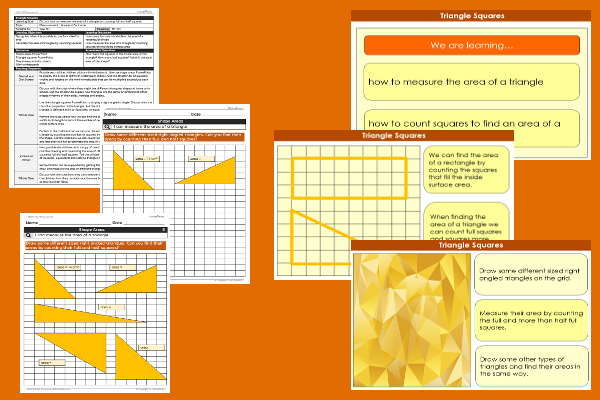Lesson Four – Triangle Squares

This maths teaching pack for Key Stage Two gets the children to explain and record how to measure the area of a right angled triangle by counting matching numbers of full and half squares as part of each shape’s area.
The class can select and illustrate how to find the area of different sized right angled triangle shapes by using measurements and number calculation skills.
Download this teaching pack including a lesson plan, classroom activities and an interactive presentation to explain and record how to measure the area of a right angled triangle by counting matching numbers of full and half squares as part of each shape’s area
Activities in this teaching pack include a set of differentiated worksheets to select, measure and calculate the area of different sized triangle shapes by counting their matching numbers of full and half squares.
The interactive presentation gets the children to explore how to measure the area of a right angled triangle by counting full and half squares.
This lesson is part of a maths scheme of work to get the children to develop and refine skills in measuring and calculating the areas and perimeters of different geometric shapes including rectilinear and compound shapes. There are teaching activities for shared learning, differentiated worksheets to support independent learning and interactive presentations to introduce concepts and key skills.
-

Maths Arithmetic Assessment
Assess abilities in solving arithmetic number problems for addition, subtraction, multiplication and division when working with informal and formal written calculations
-

Environment
Identify and describe some of the special landscapes and locations that can be found in the world and reflect on how they can be protected and preserved for the future
-

Silent Letter Words
Explore and illustrate the meanings and spellings of some different words with silent letters when using them in a range of topics and scenarios
-

Complaint Letters
Explain and model how to format and structure writing when composing letters of complaint about different issues and scenarios
